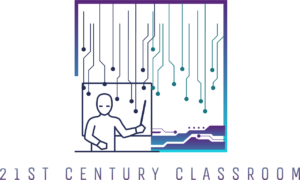Assessment and feedback are essential components of any successful learning experience. Whether in education, training, or professional settings, the ability to evaluate progress, identify areas for improvement, and provide constructive feedback is crucial for growth and development. In this blog post, we will explore the art of assessment and unveil effective strategies for evaluation and feedback that can be applied across various domains. By mastering these strategies, educators, trainers, and supervisors can enhance the learning process and foster continuous improvement.
The Fundamentals of Assessment
Assessment serves as a powerful tool for gauging knowledge and skills. At its core, assessment measures the learning outcomes and provides insights into the progress made by individuals or groups. It can take different forms, such as formative assessments that inform teaching and learning during the process, and summative assessments that evaluate overall achievement. By understanding these distinctions, educators can tailor their assessments to meet specific objectives.
When designing assessments, it is crucial to establish clear goals and objectives. Clearly defined outcomes help guide the assessment process and ensure alignment with learning goals. Additionally, selecting appropriate assessment methods is key to capturing a comprehensive view of a learner’s capabilities. Assessments can range from traditional exams to projects, presentations, or even portfolios that showcase a collection of work. Each method has its strengths and weaknesses, and careful consideration should be given to selecting the most appropriate approach.
To enhance the credibility and usefulness of assessments, validity and reliability are essential. Validity ensures that an assessment measures what it intends to measure, while reliability ensures consistency and reproducibility of results. To achieve this, educators should utilize rubrics and grading criteria that provide clarity and transparency in the evaluation process.
Effective Strategies for Assessment
Authentic assessments play a significant role in bridging the gap between theoretical knowledge and real-world application. By incorporating authentic assessments, such as case studies, simulations, or problem-solving scenarios, educators can encourage learners to apply their knowledge and skills in practical situations. This approach not only enhances learning but also prepares individuals for the challenges they may face in their future careers.
Feedback: The Key to Unlocking Growth
Feedback is a vital component of the assessment process. When provided effectively, feedback empowers learners by offering guidance and direction for improvement. Effective feedback is timely, specific, and constructive. It highlights strengths while also identifying areas for growth. Feedback should be personalized and tailored to the individual learner, taking into account their unique strengths, weaknesses, and learning styles.
Giving and receiving feedback is an art in itself. Active listening and open communication techniques are crucial for both parties involved. Educators, trainers, and supervisors should create a safe and supportive environment where learners feel comfortable receiving feedback and are encouraged to actively participate in the process. It is equally important for learners to develop skills in giving constructive feedback to their peers. Peer feedback and self-assessment can be valuable tools for reflection and growth.
Overcoming Challenges in Assessment and Feedback
While assessment and feedback are essential for learning, they can present challenges for educators, trainers, and supervisors. Time constraints and managing the workload associated with assessments often pose significant hurdles. To overcome these challenges, leveraging technology can streamline the assessment and feedback processes. Online platforms, automated grading tools, and peer feedback systems can help save time and provide efficient feedback mechanisms.
Another challenge is accommodating diverse learner backgrounds and needs. Inclusive assessment practices require flexibility and the ability to differentiate assessments to meet individual requirements. By offering a variety of assessment methods, providing additional resources, and adapting evaluation criteria, educators can create an inclusive learning environment that supports all learners.
Takeaway
Mastering the art of assessment is a continuous journey that requires careful planning, effective feedback strategies, and adaptability. By following the fundamental principles of assessment, incorporating authentic assessments, and providing timely and constructive feedback, educators, trainers, and supervisors can enhance the learning experience for their students or teams. Overcoming challenges and utilizing technology can further optimize the assessment and feedback processes. As we strive for continuous improvement, let us embrace the art of assessment and leverage its power to unlock the full potential of learning and growth.
In the pursuit of excellence, the mastery of assessment and feedback is an indispensable tool. It empowers individuals to realize their capabilities, strengthens their understanding, and propels them towards success. So, let us embark on this journey together, unraveling the art of assessment and forging a path towards an enriched learning experience.

